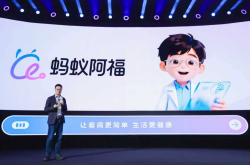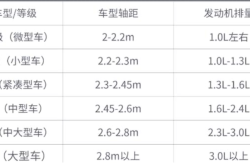Why Phone Manufacturers, from Meizu and Huawei to Apple, Are All Adding 'AI Buttons'?
![]() 09/16 2025
09/16 2025
![]() 507
507
From a solitary AI button to the fierce competition for smartphone AI access.
Though somewhat delayed, the Meizu 22 has finally made its debut.
On September 15th, just before the release of the new generation of flagship chips, Meizu unveiled its latest flagship smartphone, the Meizu 22, boasting a newly upgraded Flyme AIOS. For an in-depth look at this Meizu flagship, refer to Lei Technology's latest report on the Meizu 22. Notably, as hinted at by the official prior to the event, the Meizu 22 also features a physical 'AI button' on its side.
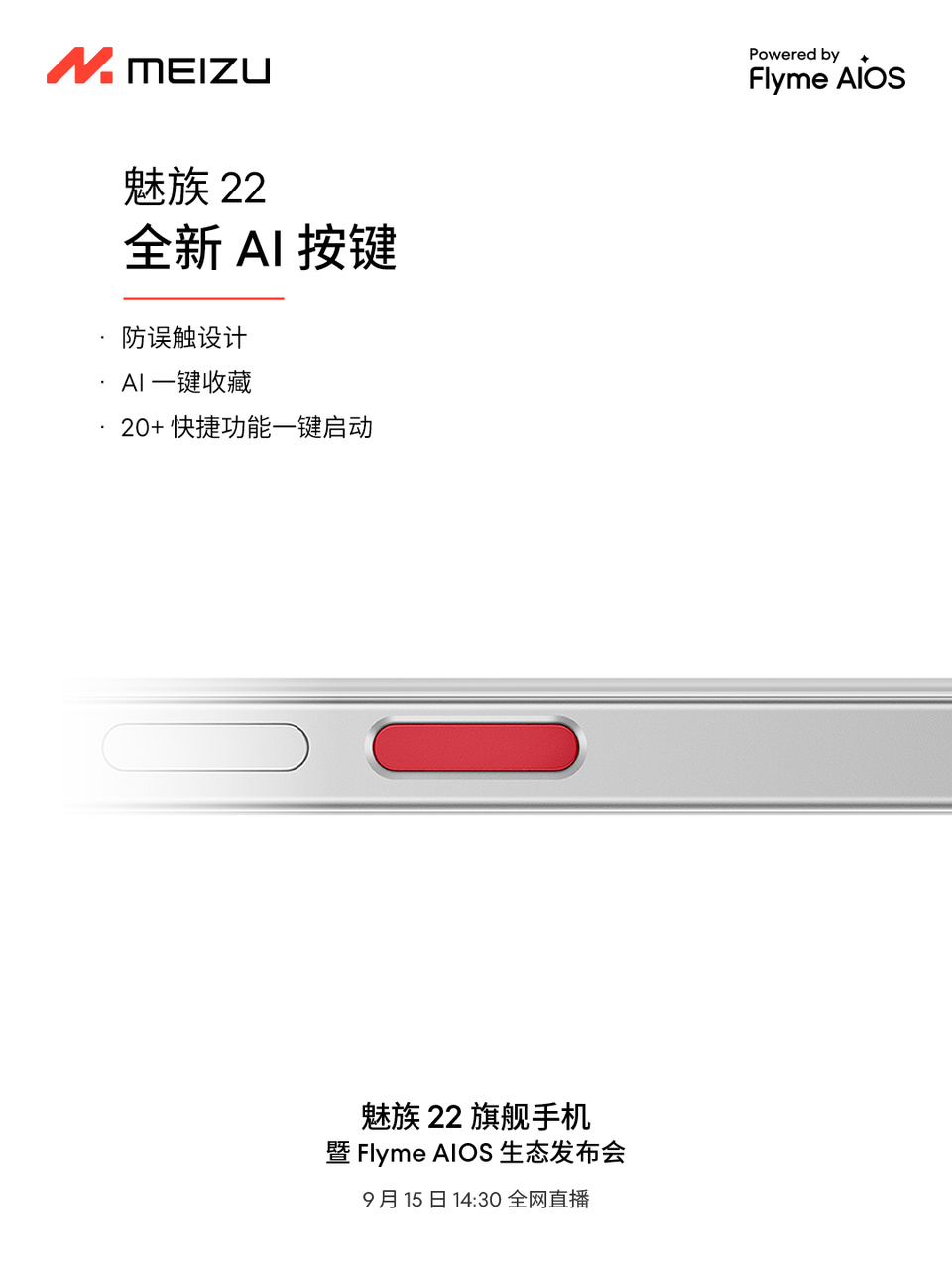
Image source: Meizu
Why the emphasis on 'also'?
In fact, those who keep a close eye on the smartphone industry may have observed that since last year's flagship models, a new 'AI button' has made its appearance on the sides of phones. The iPhone 16 series and OPPO Find X8/X8s series were pioneers in ditching the original three-stage toggle and adopting new independent buttons—customizable action buttons on iPhones and quick keys on OPPOs. Huawei's Mate 70 series also transformed the power button into an AI smart control key, while the Nothing Phone (3a) series boasts the Essential Key.
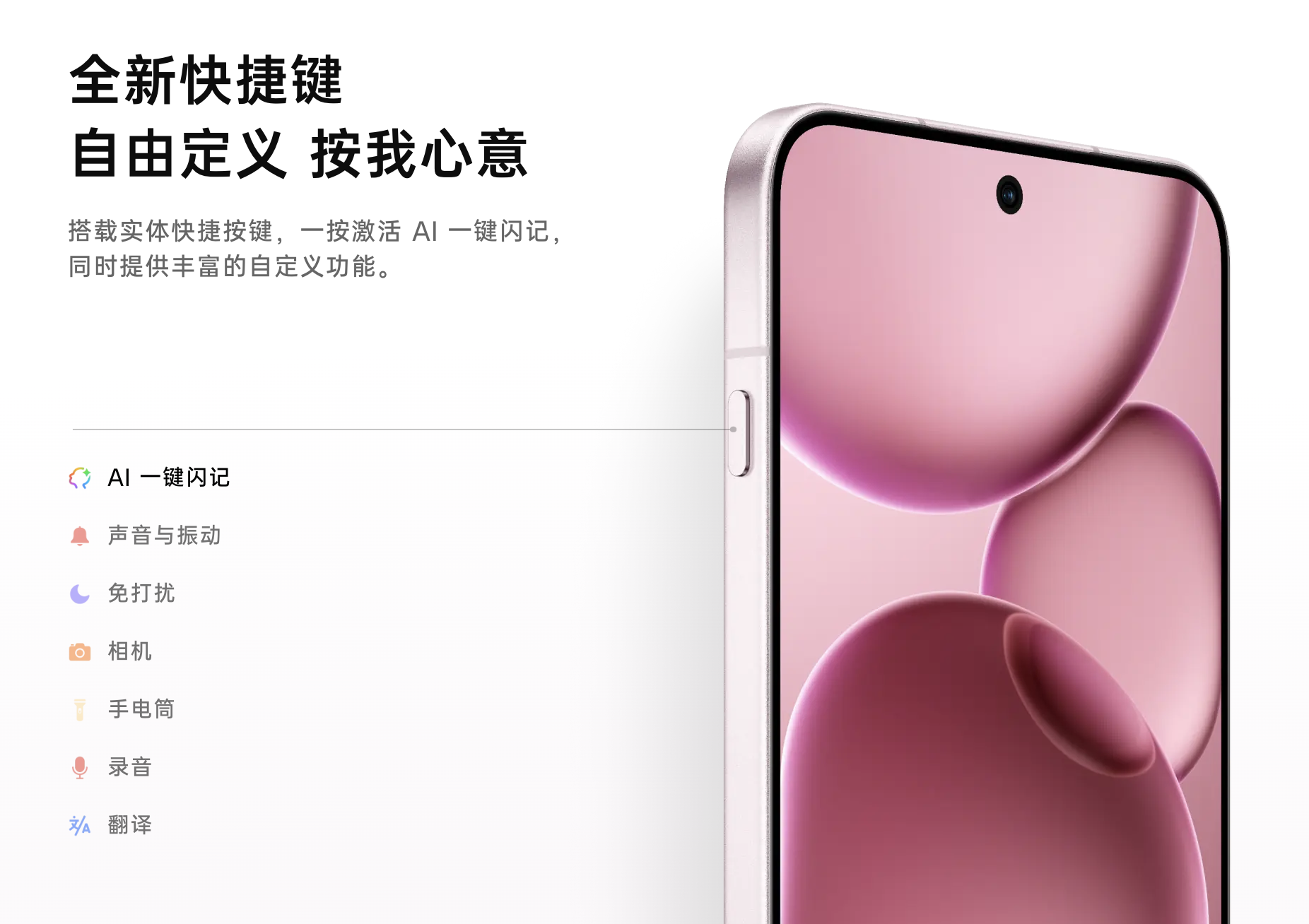
Image source: OPPO
Whether it's Apple, OPPO, or Huawei, these buttons are positioned as multifunctional shortcuts. Beyond triggering basic functions like recording, flashlight, and status switching with a single press, they also act as gateways to current AI features at the system level, such as OPPO's AI Flash Notes or simultaneous translation.
More intriguingly, in addition to the Meizu 22, the upcoming vivo X300 series is also set to introduce a new physical button to its body, which is widely expected to be a similar 'AI button'.
But hold on a second—before ChatGPT, phone manufacturers had already experimented with adding physical 'AI buttons' to trigger AI functions, from Xiaomi to vivo. However, this design quickly faded into obscurity, reverting to the 'volume + power' physical button combination. Will this round of AI buttons fare any differently?
From 'waking AI' to 'giving AI context': A far cry from the AI button of eight years ago.
If we were to define today's 'AI button,' it would be this: It is no longer merely a 'voice assistant wake-up button' but a multifunctional quick access point centered around AI. Its core value lies in entrusting the current context of the phone—be it screen content, camera viewfinder, or the user's immediate voice—to AI for understanding and processing, directly generating results or triggering subsequent actions.
This understanding stands in stark contrast to the AI wave triggered by AlphaGo in 2016. In fact, Samsung's Galaxy S8 (2017) 'Bixby button,' vivo's NEX/X23 (2018) 'Jovi AI button,' and Xiaomi's Mi 9 (2019) 'AI button' primarily served as 'quick access points' for AI voice assistants. Pressing them was equivalent to saying 'Hi Bixby' or 'Xiao Ai'.
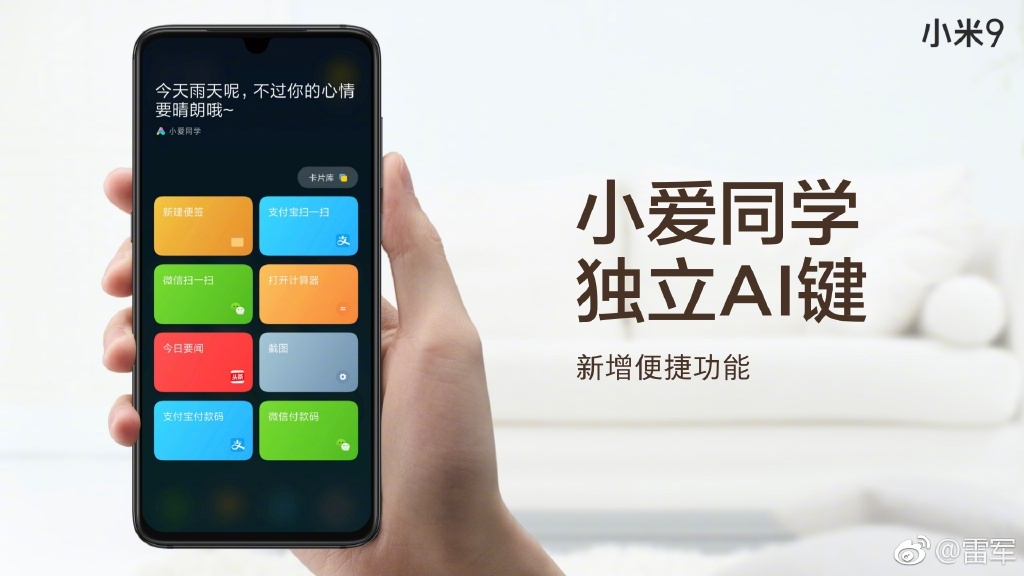
Image source: Xiaomi
However, the crux of the issue was that AI voice assistants at the time were 'too rudimentary,' with limited recognition and understanding capabilities. They could check the weather or set alarms but struggled with complex tasks, let alone cross-application actions. As a result, the highly impractical AI voice assistants were mostly confined to simple daily commands, and the independent physical AI buttons became even more redundant—there was a button, but nothing truly worth triggering.
So, later on, we witnessed phone manufacturers collectively abandoning independent AI buttons, retaining voice assistants through long-pressing the power button. The advent of generative AI has completely transformed the narrative of 'smartphone AI.' Today, phone manufacturers no longer position buttons as 'wake-up assistants' but emphasize 'letting AI do the work.'
Take OPPO as an example. The primary feature of its quick key is 'AI Flash Notes.' When users press the button, the system directly captures the current screen content, which AI then structurally comprehends (e.g., automatic summarization, extracting time, location, and itinerary). This information can also be synced to the cross-device 'Xiao Bu Memory' space as structured memory cards for users to retrieve and review at any time.
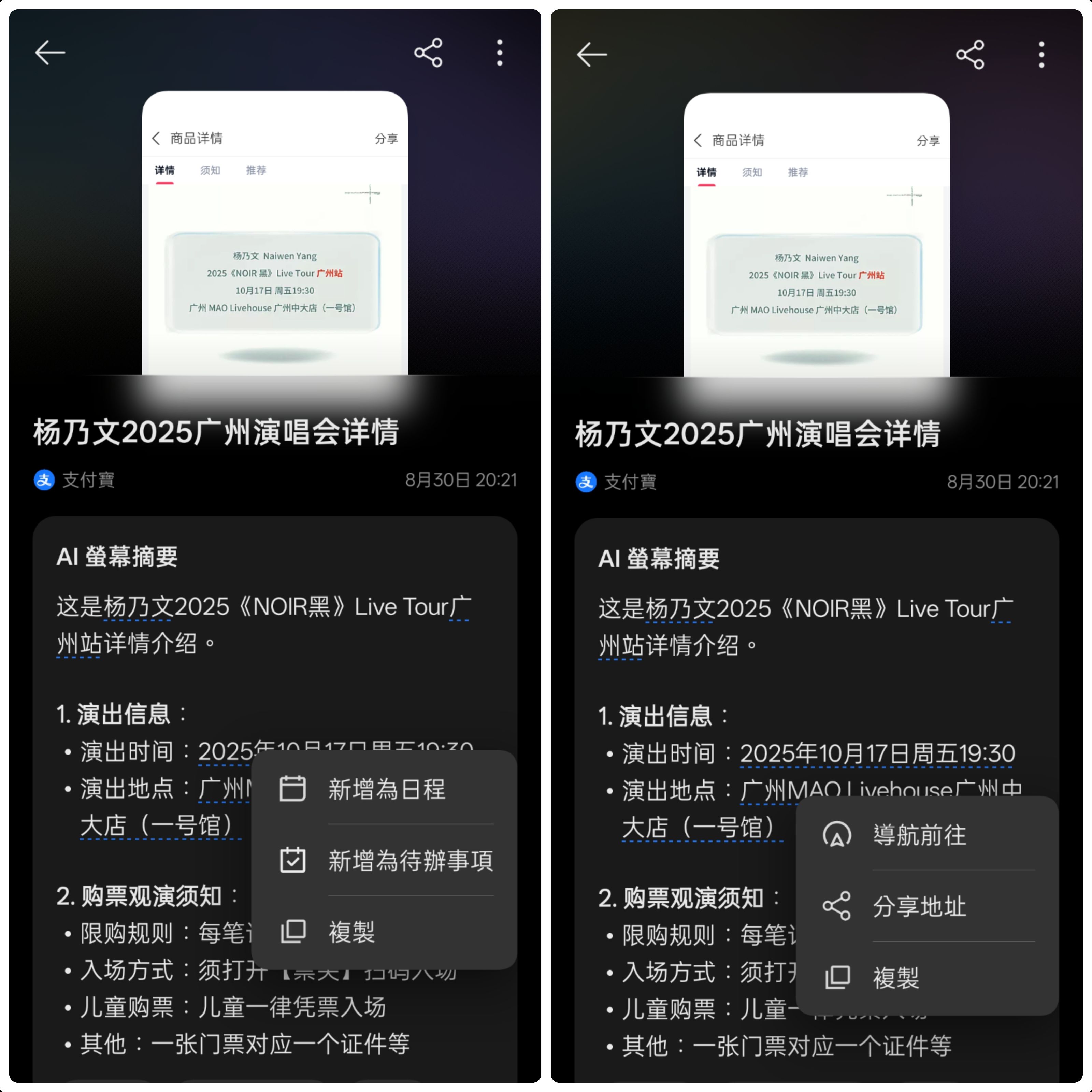
Image source: Lei Technology
Unlike simply summoning Xiao Bu Assistant, its goal is to eliminate the step of saving and processing information, turning 'what you see is what you get' into 'what you see is what you process.' For instance, with a single press of the 'AI Flash Notes' button, AI can actively recognize and understand flight information or other itineraries displayed on the current screen, then suggest actions like 'add to calendar' or 'navigate,' which can be confirmed with a single press.
Nothing's Essential Key follows a similar approach, featuring a corresponding Essential Space where AI automatically comprehends, summarizes, and categorizes various structured and unstructured information seen on the phone screen. In short, it lets AI organize a 'central hub for personal information.' Apple's design differs slightly; besides having AI understand current screen information, Apple's Visual Intelligence also enables AI to directly understand the real world through the camera lens to provide proactive services.
So, in Lei Technology's view, today's 'AI button' can be succinctly summarized in three points:
1. Multifunctional shortcuts: Still capable of toggling traditional operations like flashlight and camera with a single press, maintaining basic practicality.
2. AI context processing: The core is directly entrusting current information (screen, lens, voice) to AI for result generation.
3. System-level gateway: The AI button does not belong to a single app but is deeply embedded in the operating system, ensuring accessibility in any scenario.
With the exception of the third point, the 'AI button' is worlds apart from how phone manufacturers defined it eight years ago. The multifunctional design grants users greater autonomy while ensuring the basic practicality and usability of an independent button. More importantly, it represents a philosophical shift: Instead of just 'telling' AI what we see or hear (screen, lens, voice), we let AI actively comprehend and process it to enhance efficiency and experience.
Of course, all of this hinges on the emergence of large models and stronger system integration capabilities from phone manufacturers.
Is AI, which is not yet a competitive core, truly in need of a physical AI button?
Clearly, generative AI is rapidly infiltrating smartphone experiences. Beyond the most common AI chat, AI photo editing is also gaining traction. However, it must be acknowledged that actively using AI (especially first-party AI) has not yet become a core habit in daily smartphone operations. For most users, a phone's most common uses remain photography, social media, gaming, and payments, while first-party AI experiences from various manufacturers have not yet demonstrated differentiated competitiveness that makes them 'indispensable once used.'
Against this backdrop, is it necessary to add a dedicated physical button for smartphone AI features? This question is not merely about product form but also a query into future smartphone interaction trends.
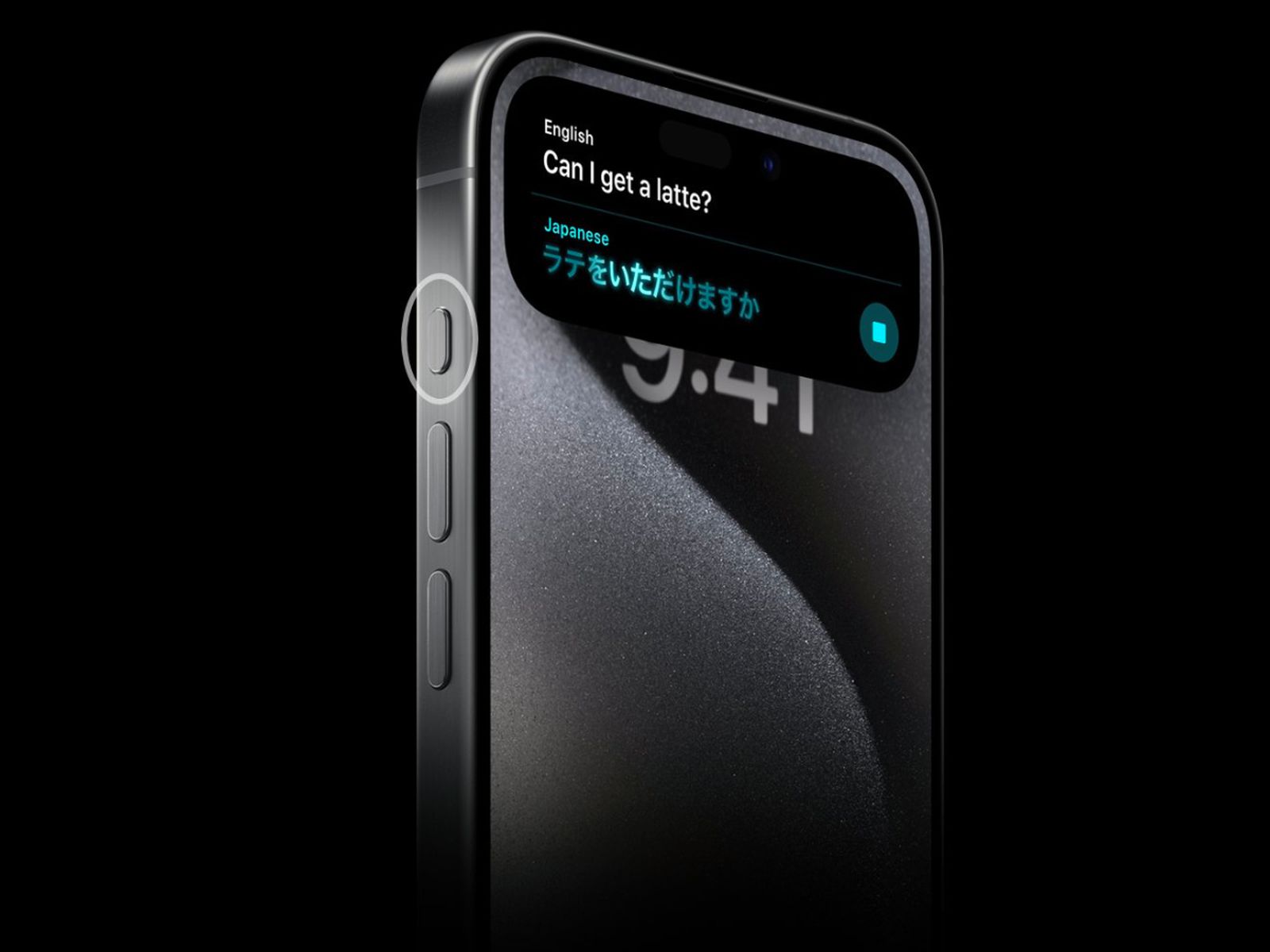
Image source: Apple
In fact, from today's actual functional designs by phone manufacturers, most so-called 'AI buttons' do not truly serve AI exclusively—they all have 'dual roles.' They can quickly launch the camera, flashlight, or silent mode, or be set to Visual Intelligence (Apple), AI Flash Notes (OPPO), or AI simultaneous translation. Huawei integrates multifunctional shortcuts, including AI features, into the power button through a 'double-tap trigger,' achieving a three-in-one combination of power, AI, and wake-up assistant buttons.
All of this indicates that when designing this 'AI button,' manufacturers are not solely betting on AI but hope it can balance versatility and future-proofing—even if users do not use AI features temporarily, the button can still serve as a quick tool. From a user perspective, the actual value of the AI button largely depends on the maturity of the manufacturer's AI capabilities and the depth of system integration.
If recognition is inaccurate, responses are not swift enough, or replies are not intelligent enough, the AI button can easily revert to the awkward situation of 'having a button but no use'—which was why independent AI buttons from various manufacturers disappeared in the past.
On the other hand, we must also confront the fact that from a usage frequency perspective, current AI features are still in the 'useful but not essential' stage. For example, you might occasionally use AI to summarize meeting notes, translate recipes, or extract webpage summaries, but these behaviors are far less frequent than opening WeChat or Alipay. Adding another physical button at this juncture inevitably raises the question: Is it worth dedicating a high-frequency position to a low-frequency behavior?
However, from another vantage point, the advantage of a physical button lies precisely in its ability to enhance the reach and conversion rates of low-frequency features. Compared to voice wake-up or side gestures, physical buttons offer strong tactile feedback, fewer accidental operations, and higher discoverability. Especially independent buttons can largely avoid the accidental operation probability of Huawei's 'double-tap trigger.' More importantly, physical buttons transform the vague notion of 'wanting to use AI' into a clear operational path—click or long-press.
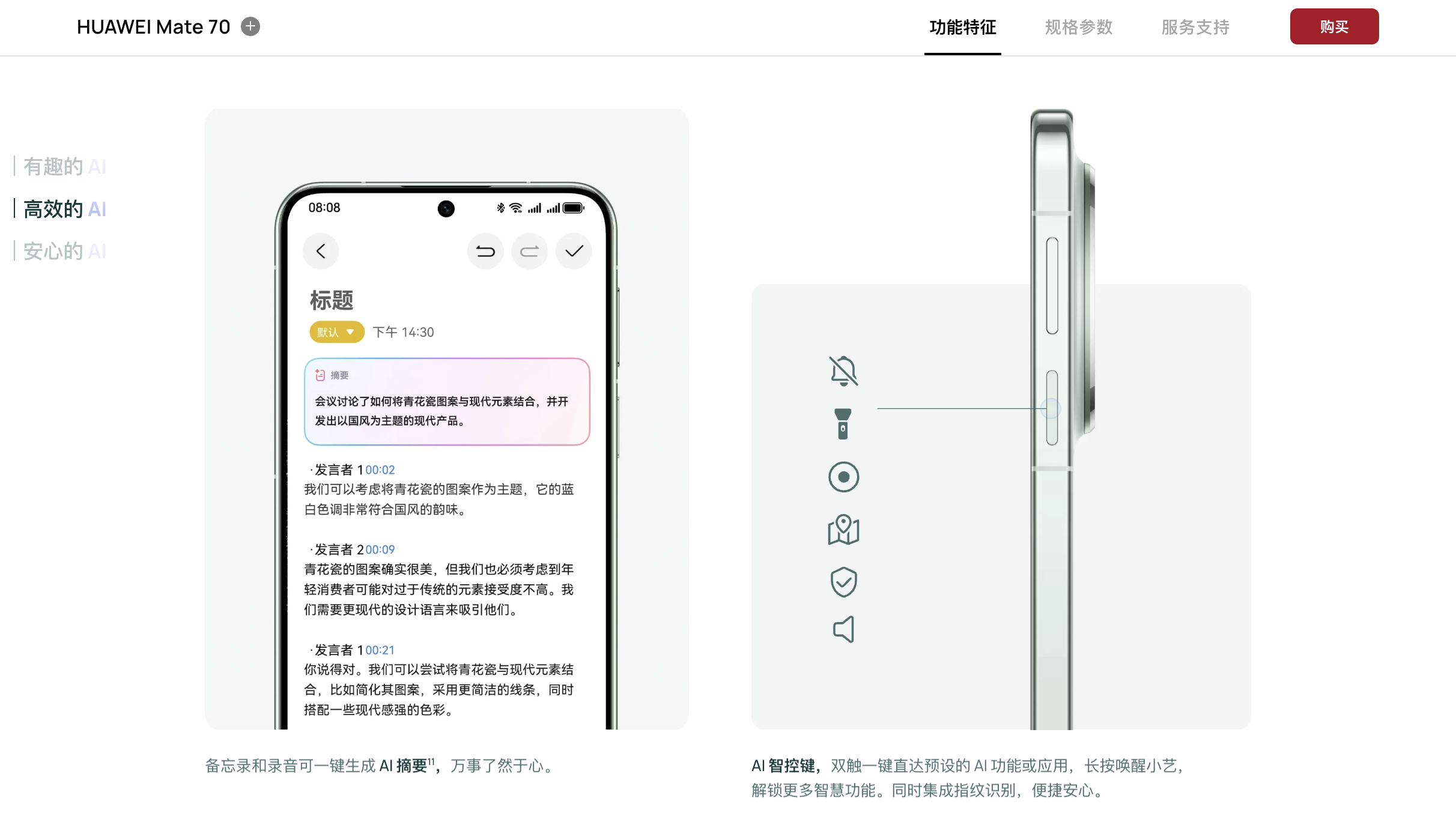
Image source: Huawei
For manufacturers, the AI button is not just a user interaction method but also a strategic layout to compete for AI gateway mindshare: This always-accessible physical gateway has a significant chance of becoming users' 'AI hub' in the future.
So, if you ask whether the 'AI button' is necessary at this stage, in Lei Technology's view, for manufacturers with immature AI capabilities, it may be redundant; but for those with solid AI capabilities and well-executed system-level integration, it is a strategic button 'for the future.'
In short, it may not be the most important button on today's smartphones, but it could be the one leading to the future.
Epilogue
While acknowledging the current and future value of the 'AI button,' frankly, today's 'AI button' experiences from various manufacturers still have significant room for improvement. Especially since Apple, OPPO, and Nothing have relatively similar approaches, theoretically, there is greater potential for mutual inspiration and easier convergence.
For instance, the introduction of visual intelligence seems almost inevitable. OPPO could leverage multimodal model capabilities to achieve this, offering zero-cost 'gains' for ordinary users and infinite possibilities for visually impaired users. Conversely, Apple could also draw inspiration from Xiao Bu Memory and Essential Space designs to enable AI-driven processing of massive personal information on the phone side.
Of course, as mentioned earlier, even with the right approach and technology, if the capabilities of large models and the manufacturers' own abilities are not strong enough, the final experience will hardly be mature or user-friendly.


